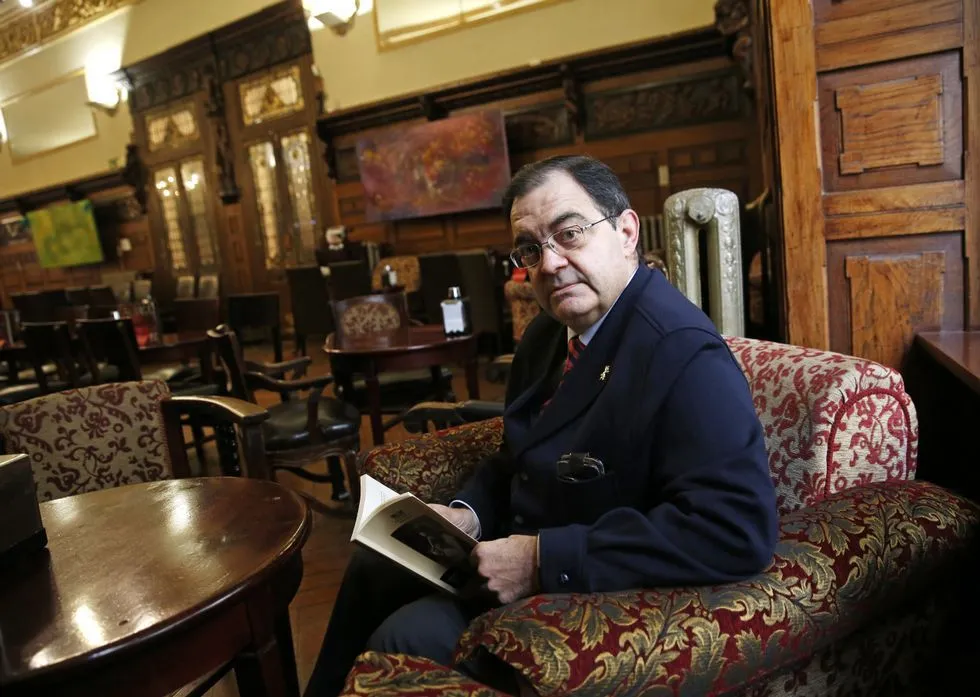«Who knows about diabetes knows about medicine;Because diabetes affects the eye, large and small blood vessels and all organs irrigated by them, the kidney, muscles, brain ... affects everything.To treat diabetes well, you have to know a lot of internal medicine, ”says Fernando Ponte Hernando, pediatrician, former director of the Medical-Surgical Hospital of Conxo, and expert in Medicine History.Tomorrow, at 19.30, in the Hall of Degree of Medicine it presents a new book, Diabetological Controversies of Dr. R. Carrasco Formiguera (1892-1890), volume prologized by Ciril Rozman, a reference in the field.
«The usual thing is that in Galicia we investigate the history of Galician medicine.But Carrasco, the first specialist who used insulin in humans in Spain, catches my attention years ago.I already took care of him in previous investigations about Roberto Novoa Santos, and this is a broader job about his contributions to diabetes, ”he explains.
The Catalan specialist «was in a timely manner on the right place.He was a scholarship in the United States when insulin was presented, at the end of 1921. He returns to Spain with the idea of preparing insulin.At first, by its own means, very unequal insulins come out.Then they send him instructions on how to do it, from North America, he follows international advances, and has better results.He also realizes how children better treat.He had several successes in children's diabetes.One of the most prominent was the case of Juan Pujadas Lamarca (1919-2006), a small child in those years, which began to be treated in September 1923 with 3 years of age and lived until 88, being for many years thePatient with more veteran insulin treatment in the world, ”he says.
Ponte highlights the «Carrasco encyclopedic work, as he published from 1913 to 1978. He belonged to a brilliant era of Spanish science, which was very internationalized.The Magazine Archives of Endocrinology had four directors: Gregorio Marañón, Roberto Novoa Santos, Augusto Pi Suñer, and the Argentine Alberto B. Houssay, who was Nobel Prize in Medicine in 1947, ”he says.
One of Carrasco's controversies, which Ponte studies in this book, is with Novoa Santos: «They had a scientific discussion and it seems that Novoa convinced him.What Novoa Santos defended in 1924 in Santiago, before going to Madrid, today is the basis of the treatment of diabetes with incretins;Novoa Santos was right after 90 years, because he claimed that with these hormones there were descents in blood glucose in the less abrupt diabetics than with insulin.Now there are many advances on diabetes, including that of incredine, ”he says
Remember that "before the 1936 war, a series of Galician medical figures die, such as Gil Casares, Baltar Cortés, Novoa Santos or Cadarso."Also at that time Severo Ochoa unsuccessfully opposed a chair in Santiago.Ochoa and Carrasco agreed in exile.
The history of medicine in Galicia «is wrong, it is not appreciated.There is only one teacher, Enrique Jiménez, for 400 students.In Granada, for example, there are several professors and headlines.We must highlight the effort of the album da science of the Costa Galega culture.But more is needed, ”says this expert.
Rossend Carrasco I Formiguera.He was the first Spanish state doctor to use insulin for the treatment of diabetes, in 1923.
Roberto Novoa Santos.In 1924, in Santiago, he already defended the treatment of insulin with incredine, which is now recognized and valued.




